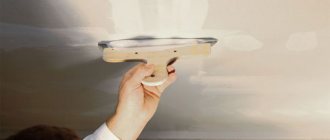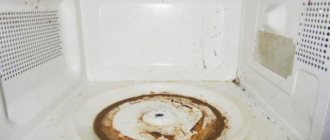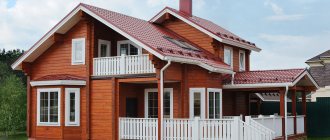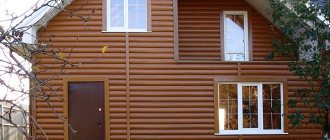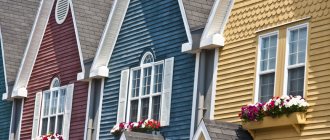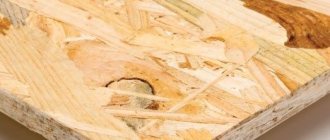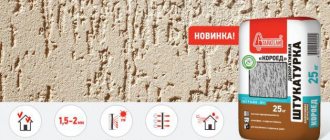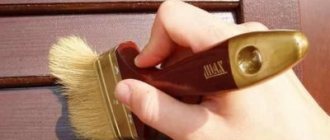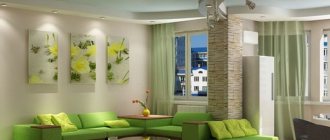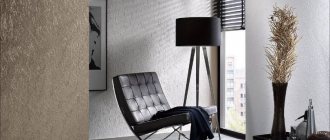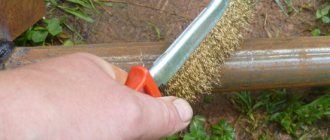Working on the façade of a house always causes a lot of controversy and dilemmas. What is the best way to improve? Which materials are more durable? But such questions do not arise when the facade of the house is covered with clapboard.
The only decision that needs to be made is to choose what to paint the surface with.
Bright rich colors, several days of painstaking work - the result is impressive
The main features of choosing surface coating products
There can be a lot of processing options. It is important to choose the most reliable ones, which are ideal, taking into account both the size of the owner’s wallet and the aesthetic appearance. In this section, we propose to study the most alternative materials for outdoor painting of lining.
Standard oil based paints
This coating is suitable for wood cladding; it penetrates quite deeply into the base, thereby creating a protective layer that will prevent moisture from getting into the cracks and, as a result, the formation of fungus and mold.
The paint’s resistance to temperature changes and prolonged exposure to ultraviolet radiation is also noted. Despite this durability, the paint needs to be renewed from time to time. It is enough to re-apply the composition to the same layer without first preparing the surface. This will give even greater reliability to the paintwork.
Oil paint is characterized by a long drying time, which is not a very convenient property, and therefore dust and small debris cling to the sticky layer.
Oil paint to create a protective layer for lining walls with clapboards on the street Source petrovich.org.ua
On a note! It is better to use oil paint for finishing carriage street material when the country house building is located in a shady area.
Antiseptic compounds
With the help of antiseptics, it will be possible not only to refresh the lining on the facade of the house, but also to protect it from the effects of harmful microbes. Also, insects and rodents will not be able to penetrate into the small cracks of the wood, because the composition of the finishing material has a pest-repellent odor.
Antiseptics also reliably protect the coating from sunlight and prevent cracking and drying out of the wood. Such compositions are quickly absorbed due to their light consistency.
Only the antiseptic composition has a main negative feature - it is opaque. Therefore, you will have to forget about the visibility of the wood structure on the surface of the walls. Therefore, it is recommended to give preference exclusively to glazing materials if you want to preserve the appearance of the tree.
Wood antiseptic as a means of coloring lining Source neoasept.ru
Using the latest means, you can not only preserve the porosity and wood grain, but also emphasize it and make it stand out against the background of the facade. Glazing compounds help prevent the appearance of rot and preserve the appearance of the material when exposed to negative climatic conditions.
Acrylic paint compositions
When applying acrylic paints to the lining, it is possible not only to preserve the performance properties of the wood material, but also to emphasize its appearance. This composition is considered environmentally friendly, unlike oil-based ones, and retains its color many times longer.
Acrylic paint for wood is very flexible, so even if the walls of the house shrink strongly, it will not crack, but will continue to maintain the attractive appearance of the walls. Applying acrylic to wood is very easy, plus it lasts longer. The product is vapor-permeable, due to which condensation will not heat up inside under a layer of paint or inside the lining.
Alkyd varnish
Alkyd varnishes are available in a wide range, but you need to know how to work with them in order to ultimately get a perfectly smooth and beautiful coating on the facade of a country house. The material has positive performance properties: it has a high level of protection from moisture and is considered durable.
After drying, it withstands exposure to sunlight, practically does not fade and retains the structure of the carriage wood material. The traditional service life of alkyd varnishes of acceptable quality is more than ten years, provided that the composition is applied correctly.
Alkyd varnish for clapboard cladding Source onlinetrade.ru
Important! Any alkyd varnish must be applied in a strictly thin layer. Otherwise, it will start to wrinkle. You can try re-coating only after the previous layer has completely dried.
Ship or yacht paint and varnish composition
Yacht varnishes themselves are quite expensive, but work well when applied to wood. The surface of the external surfaces of the house acquires an additional protective layer that is not afraid of temperature changes, sun exposure, and moisture.
After application, the varnish reliably protects the lining from yellow spots that so often occur during standard coloring of the material. It also has a minimal drying time - no more than 3-5 hours.
Coloring protective composition for yachts, which is suitable for wood lining Source irecommend.ru
The proposed compositions are offered in different shades, despite the fact that they are translucent. Therefore, you will have to choose the right one taking into account the color of the facade.
Waxes
To decorate and protect wooden panels, you can also use a material such as wax. It can be solid, liquid or aqueous. As for the first, it is heated to a liquid state before being applied to the prepared wooden surface.
The second and third modifications are used in the form in which they are sold. After application, the wax helps create a protective layer, but only if it is applied evenly to the previously prepared surface.
Choosing compositions for different rooms
Impregnation is selected based on the conditions in which the wood will be located. It would be a mistake to assume that the processing technology is the same for all premises. It is necessary to take into account the level of humidity, temperature range, the possibility of exposure to UV radiation, etc. Let's look at which drugs are best to choose for different rooms.
What impregnation to choose for lining inside the house
When decorating residential premises, choose the safest options possible. Thus, water-based preparations are better suited than those produced using solvents or resins. The impregnation must not release toxic substances. This is dangerous for people. Treatment with a fire retardant is required. This will reduce the risk of fire, and in the event of a fire, increase the chances of rescue.
If you are finishing a room where the humidity is high, for example a bathroom, you will need to apply an antiseptic. For summer cottages with temporary residence, where there are no residents in winter and heating is not provided, antiseptic impregnation is necessary for the lining inside the house. In cold weather, there is a high risk of condensation, which saturates the wood and causes it to rot. Combination drugs can be used.
Before applying the decorative coating, use a primer. This is a solution that improves the adhesion of the base, fills pores and hides minor defects. Using a primer allows you to reduce the amount of decorative mixture. A primer with antiseptic properties is available; it additionally protects the base from mold.
To add color, decorative impregnations are used for the lining inside the house. These are waxes, oils, stains or varnishes. Select a suitable shade and solution and apply it in accordance with the manufacturer's instructions. This way it is possible to emphasize the texture of the wood and give it the desired shade. You can simply paint the boards. The paint will cover the texture, but will give a bright, rich color.
Instagram robinwood_ufa
Instagram turina_a_design
Preparations for baths
The bathhouse is hot and has high humidity, so special treatment is required. But the conditions in the steam room and the washing room are different, which requires the choice of different solutions. In the washing room the temperature is lower, there is no steam. Here you can use natural or artificial compounds. The first option is safe and environmentally friendly, but it has a significant drawback. Such oils and waxes are washed off very quickly and will have to be renewed frequently. And this is a waste of time and money. Therefore, it is optimal to choose varnish for the relaxation room in the bathhouse and wash room. But only one that is intended for interior use and is water-based. A primer must be applied under the varnish layer. In this case, take a composition with an antiseptic additive.
Let's look at how to soak the lining in a steam room. Here the temperature and humidity are higher, which makes the requirements for finishing products more stringent. They must be completely safe and not release toxic substances under such conditions. In addition, a person lying on a shelf comes into contact with the wood with his skin, which can provoke an allergic reaction if a low-quality solution is used.
Natural oils are the best choice. Many, for example, treat wood in a steam room with linseed oil. But you need to understand that you will have to do this very often. There is another option - varnish intended for the steam room. This is a special water-based composition. It is completely safe and has all the necessary characteristics
It is important to choose certified products from well-known manufacturers. Otherwise, poisoning is possible.
Subtleties of choosing a coloring composition
Before finishing, it’s not enough to know how to paint the lining on the outside of the house; you also need to choose the right composition. To do this, it is recommended to take into account the following nuances:
- take into account the climatic conditions in the region where the country house is located;
- know the properties of wood that is used for lining;
- study the labeling on the packaging (resistance to moisture and temperature changes must be stated);
- The warranty period from the moment of drying is at least 5 years.
By observing these simple conditions, you can purchase a high-quality composition that will pay off over the years.
Paint color options for wooden street finishes Source torinaimage.pw
Important! If, from the moment of initial application of the coloring composition on the street paneling, a period equal to the warranty has not passed, the owner has every right to contact the store where he bought the composition to compensate for financial damage or purchase a new high-quality composition. This outcome is only possible if the purchase receipt is kept.
Option #2. Concrete floor
Concrete garage floors are a classic. Concrete can be the basis for further finishing, or it can be used on its own. Most garage owners prefer concrete floors, and for good reason.
Advantages:
- high strength and durability, the ability to withstand severe loads, however, the magnitude of these loads greatly depends on the grade of concrete;
- Smooth surface;
- resistance to moisture, fire, temperature changes and most aggressive substances;
- absence of harmful fumes;
- low cost;
- the opportunity to carry out the work independently.
A concrete floor is an almost ideal solution for arranging a floor in a garage, but this option also has some disadvantages:
- the floor surface is very cold, so if you spend time there often and for a long time in winter, you will have to think about a heating system;
- if you do not treat the concrete with anything, it will wear off and become dusty over time;
- the complexity of organizing a concrete floor;
- To make the work go faster, you will need special equipment.
The garage floor can be constructed using prefabricated concrete blocks or by pouring concrete directly on site. The use of ready-made blocks will significantly speed up the process of organizing the floor covering; moreover, the characteristics of factory blocks are stable and are tested by the factory. On the other hand, transporting heavy finished blocks will require special equipment, and there will be seams between the individual slabs, which is why the technology of pouring a monolithic slab is usually used.
To equip a concrete floor, first remove the soil to a depth of 20-30 cm, fill in about 10 cm of crushed stone, compact it, arrange a sand cushion of about 10 cm, which is also thoroughly compacted. A cement screed with a thickness of about 2 cm is laid on the sand, then a waterproofing material (for example, roofing felt) is laid, and only after that it is the turn to carry out the main pouring of the concrete floor (5-7 cm thick), and it must be reinforced with steel reinforcement. As the concrete screed dries, it is periodically moistened with water. This will prevent the formation of cracks and ensure proper strength to the concrete. Naturally, the floor is made with a slope towards the gate.
When the concrete has gained strength, the garage can be safely used, i.e. use the screed as an independent floor covering. Some people prefer not to dwell on this and use concrete only as a basis for further finishing of the floor, for example, with porcelain stoneware, tiles, or for pouring a self-leveling floor.
The simplest option for finishing a concrete floor is painting, and it becomes mandatory if, after drying, you rub the screed with the sole of your shoe and sand appears. Such a floor will not last long, therefore it needs not so much decorative finishing as protection.
Coloring procedure from A to Z
When starting to paint a facade made of lining, you need to divide the work into several stages. In this section we suggest that you familiarize yourself with them.
Preparation
The first and most important thing is to properly prepare the wood for painting. To do this, you must initially carry out revision work and inspect the surface for integrity, cracks, damage, the formation of rot or fungus, moss growths (this often occurs if the house is rarely used).
Preparation is always considered an important step, since painting a problematic surface is always accompanied by further problems: the paint layer may collapse prematurely or it will not perform its function correctly.
If there is contamination or damage by microorganisms on the surface, it must be treated with special compounds. Cracks will have to be sealed to prevent further damage under the cladding. It is also advisable to treat the places of joints, seams, and screw insertions with a sealant (and you need to choose a liquid, quick-drying composition. Silicone-based products are not suitable for this treatment).
Preparing the lining before painting Source twitter.com
Important! If you planned to paint the lining for tomorrow, but today it rained, then you should wait a while with finishing the facade. The lining must be completely dry, because the consequences of wet wood under painting can be very disastrous: the paint will swell, bacteria will begin to develop inside, and the color and aesthetics of the walls will deteriorate.
Preparation
In order for the paint to be applied in an even layer, you need to properly prepare the wood. At this stage, the lining is cleaned and polished.
Cleaning involves removing contaminants from the surface of the lining.
To effectively get rid of dirt, use a soda solution at the rate of 150 grams of the specified substance per 5 liters of slightly heated water. If there are peelings and cracks on the base, or remnants of old paint, then you need to remove the top layer. For this, a construction and metal spatula is used.
First, the surface is exposed to hot air, after which the puffy areas are removed with a spatula. You can also use special store-bought products for this.
Such solutions are rubbed into the surface, wait for the time specified in the instructions, scrub the area with a stiff brush and rinse with water.
Sanding interior finishes on walls or ceilings is done with a piece of pumice or sandpaper. It is recommended to divide the surface into several small sections and sand them one after another. The surface must be rubbed evenly to form an even, uniform plane.
At the final stage of preparatory work, the remaining debris is removed from the base. To do this, you can use a vacuum cleaner or a washcloth. When the surface is dry, begin applying primer. Along with the panels, the seams need to be thoroughly impregnated. One layer of soil is enough to secure the base.
Painting options depending on the condition of the skin
There are several painting methods, which depend on the cladding material. The possible options are listed below:
- the lining is installed, is in good condition or has been brought to perfection by grinding. In such a situation, the coating is treated with a primer. It will highlight the style and structure of the wood. Subsequently it is varnished;
- the material was not sheathed immediately and the surface became gray. The surface is painted with preliminary putty, sanding and priming. In this case, you need to use impregnation from the same company as the coloring composition;
- The siding of the house is already old. Processing such a surface requires lengthy preparatory work. Without fail, the lining is treated with a biocidal primer, which has deep penetration. Afterwards the coating is painted. But, this option is only possible if the wood does not have major damage. Otherwise, a complete replacement of the material is needed.
On a note! When performing preparatory work before painting the lining, you need to treat other parts of the facade: shutters, window sills, canopies, if they are also made of wood. Then you can simply paint them a different color to make an accent.
How to treat lining inside a house
In general, many people believe that it is better not to treat the lining indoors with anything. Maybe so, but not in every climate and room it will retain its original appearance for a long time. If the level of ventilation is insufficient, the wood may turn blue; if it is exposed to the sun, it becomes dark gray.
Blue discoloration can only be combated with biological means - chlorine or active oxygen, and then definitely impregnated with protective compounds, and maybe even painted. It’s a little easier with grayed wood: by removing the top layer by sanding you will again get a beautiful color, but without UV protection it won’t last long either. That’s why they decide to paint the lining inside the house or cottage.
One more point: not everyone likes wood in the interior. It's just that sometimes people get tired of looking at her. I just want a smooth, colored surface. This also happens, and often. In this case, look for opaque paint. Select characteristic effects as desired.
The inside of the lining is painted with opaque paints also because wood in its natural color is not compatible with all styles. But sometimes you want high-tech, for example. In this case, paint with metal particles or mother-of-pearl (for example, Lignovit Platin) is suitable.
All compositions for protecting wood can be fairly roughly divided into six main groups:
This division is arbitrary: there are many mixed compounds that can be classified into at least two groups. So there are impregnations that can be tinted, and there are paints with protective properties. The difference is in the effectiveness of the protection. Impregnations primarily protect the wood, and imparting color is a secondary task. With paints it's the other way around. Their main task is to create a beautiful coating, and protection is a concomitant effect. If you immediately need good protection and high-quality coverage, take impregnation without tinting, and after drying, apply paint.
Another example of a mixed composition is oils with wax. These compositions combine the properties of both oils and wax, due to which the wood retains its appearance for a longer time.
The question of which group to give preference is up to everyone to decide for themselves.
Different tools solve different problems and it is important to choose the right properties that you need first.
Important Tips to Follow
At first glance, the surface painting procedure may appear primitive. But, if the tips listed below are not followed, problems with the coating may occur during operation. Therefore, pay attention to the following points:
- temperature regime. The optimal air temperature should be no higher than 15 degrees;
- climate features. After painting and until completely dry, do not allow rain or other precipitation to get on the surface, otherwise the layer will be damaged;
- using a roller and brush. Such tools should be used in combination: the first for smooth surfaces, the second for hard-to-reach places.
For external processing, more aggressive paint and varnish compositions are used, so their use for internal finishing is extremely undesirable.
Painting external walls made of lining, carried out in dry weather Source gidpokraske.ru
Painting the balcony
In two-story country houses, the design often includes balconies and terraces. Their outer bases are also sheathed with carriage material. Since balcony areas on country seasonal houses are often not glazed, you need to choose harmless compositions for painting. This is due to the fact that when a person goes out onto the balcony, he will in one way or another inhale chemical vapors.
Therefore, here it is also important to know how to cover the outside of the lining. An alternative means is scuba diving, which contains only gentle ingredients. Here are some of them:
- EUROTEX. A high-quality paint and varnish composition that creates a protective coating that can repel moisture. The composition necessarily contains an antiseptic, as well as some components that form active sun protection. Features a wide color spectrum.
- "Belinka". A popular material characterized by increased resistance to ultraviolet radiation and humidity. Helps prevent the development of microorganisms and bacteria in wood, emphasizes the natural shade and structure of the lining. Moreover, no matter how many layers are applied.
- IMPRANAL. This composition not only reliably protects the wood coating, but also makes the facade walls more attractive and pleasant to the touch. This product is used not only for exterior work, but also for interior work, when the partitions of the room require constant wiping.
- Teknos acrylic varnish. An excellent composition that is not only capable of creating the aesthetics of a coating covered with clapboard, but also increases the degree of protection against mechanical influences. The final coating layer becomes vapor permeable.
The use of acrylic varnishes for facades is justified by their high reliability, but only if they are applied correctly.
Important! After applying the coating and during the first month of operation, detergents should not be used on external walls. There is a very high risk of damage to the finishing layer.
The lining on the balcony is painted with proprietary harmless compounds Source remontnik.ru
Varnish coating
Before you varnish a wooden paneling, you need to figure out exactly what composition you want to coat the surface with. Today on the building materials market you can find a variety of types of varnishes.
From this list you need to choose only one type, which one is up to you:
- Polyurethane varnishes. They are universal compositions, suitable for both indoor and outdoor work. They perform a protective function, protecting the wood from burning out and fading under the sun. There are matte and glossy;
- Alkyd-type varnishes, for example from Tikkuril, are considered as universal as polyurethane ones, but their price will be higher. Such varnishes help the wood to repel moisture, which contributes to the long life of the material;
Uniform distribution of the protective composition guarantees the durability of the lining
- Acrylic varnishes. They are used only for interior decoration, because the properties of such a composition do not include protection from atmospheric precipitation. The advantage of this product is almost instant drying;
- Acrylic-polyurethane compounds protect the lining from mold and fading.
Application of special impregnations
It is easy to coat the lining outdoors with the help of professional impregnations. Among them, you can choose one of the following modifications of the compositions:
- VALTTI AKVABASE. The composition is a primer that is compatible with all types of wood. It contains oil components, as well as antiseptics. Ideal for treating exterior walls of a house, as it penetrates deeply into the wood. It is advisable to apply this impregnation immediately after finishing with a brush, carefully treating all areas. But, after it, it is advisable to also apply a layer of coloring composition, since the primer itself does not protect the wood coating from exposure to UV radiation;
- VALTTI AKVAKOLOR. It is characterized by deep penetration into the treated surfaces, preventing the appearance of blue stains, fungi and rot. Perfectly protects the structure from ultraviolet radiation. This composition is recommended to be applied in two or three layers. Before use, the wood must be treated with a brush or fine sandpaper for better adhesion to the impregnation;
- TIKKURILA. It comes in the form of azure, is easy to use, and is based on an oil composition. The product perfectly repels water, but it must be applied in the same way as the previous composition - in two or three layers;
- SENEZH. Impregnation from a Russian manufacturer that protects wooden surfaces from all kinds of pests and damage. Features a wide range of shades. You can choose an economical composition.
The impregnated lining should look like in this photo, perhaps lighter Source brigwood.com
Using these products, a rough protective coating is often created, and the finishing is done with special paints, which are listed in the sections above.
Pre-treatment of wood
Before treating the lining inside the house with protective compounds, let's figure out what they are and what they are used for. Before applying the finishing coating to the surface of the lining, it is treated with special compounds. For this use:
- Antiseptics;
- Fire retardants;
- Priming.
Antiseptics - prevent infection of wood by fungi and insects. Application must be carried out prior to installation. To protect both the back side of the board and the grooves of the lining.
Fire retardants - make it difficult for wood to ignite and burn. Increases fire resistance. You can also use combination products.
Some types of wood primer have antifungal properties and increase the fire resistance of materials. Manufacturers of decorative coatings also often add additives to protect wood. All pre-treatment compounds can be applied either by brush or by spray.
The primer of the slats serves several purposes. Pores and microcracks are closed. Thanks to this, the tree does not swell and also prevents the release of resin during operation. Adhesion improves, the paint will not peel off over time. The decorative coating is applied more evenly, while its consumption is reduced.
Acrylic and alkyd primers are suitable for indoor use. Moreover, the latter are more adaptive for various types of wood. The use of drying oil is allowed. It penetrates well into pores and provides good adhesion to finishing compounds. However, it changes the color of the material, which may be unacceptable when subsequently using transparent varnishes. The use of polystyrene compounds should be abandoned due to their high toxicity.
Along with industrial compositions for priming, there are also folk remedies. Use PVA glue diluted with water in a ratio of approximately one to ten. Depending on the consistency of the glue. You can also brew gelatin in hot water and, after straining and cooling, use it as a primer. The resulting solution should, when applied, be absorbed into the base and not form a film.
The disadvantages include the fact that PVA turns yellow over time. Accordingly, with subsequent painting with transparent decorative varnishes, the appearance will deteriorate during operation. Gelatin can serve as a breeding ground for microorganisms.
Homemade effective impregnation
Painting lining surfaces outdoors can be done with a product prepared at home. This method is the most cost-effective and simple. To prepare it, you need:
- 10 liters of water (bucket);
- 10 bars of soap, 200 grams each (preferably laundry or tar);
- 10 liters of drying oil.
Approximate shade of do-it-yourself impregnation Source onlinetrade.ru
The entire composition must be diluted exclusively in a galvanized bucket, otherwise its walls will be damaged. The process of preparing the impregnation consists of the following simple algorithm.
- Pour water into a container and rub all the pieces of soap into it on a fine grater.
- Place the mixture on the fire and cook for 15 minutes, then let it cool slightly.
- Separately, heat the drying oil to a temperature of 36-37 degrees, prepare a tank of 20-35 liters.
- Pour two components into it evenly: soap solution and drying oil, and mix the ingredients intensively until a homogeneous mass is formed. For quick mixing, you can use a whisk or special attachments on an impact drill.
- After obtaining a homogeneous consistency, the homemade impregnation can be considered ready. Cool it to about 20 degrees, and then apply it to the wooden wall using a roller or brush (as convenient).
The next day, weather permitting, it is necessary to cover the wall with the same slightly heated composition again. A hardened finish coat with homemade impregnation can last up to five years.
The facade of a clapboard house, protected by impregnation Source skachat-kartinki.ru
Algorithm for processing lining
After the lining has already been cleaned, its surface must be sanded with construction sandpaper. Then apply an antiseptic; the layer of applied antiseptic will dry for a day. The lining is then coated with a special varnish or paint. This can be done with a brush, roller or spray gun.
If noticeable rough spots appear, then after drying you need to go over them with sandpaper. Then the surface is treated with a second layer of coating. Wait until the lining is completely dry. Well, you can admire your work.
Lining is a naturally beautiful material; the processing material can elegantly highlight its specificity. Do not forget about using an antiseptic and high-quality cleaning if the lining is already old. Happy renovation!
Attention, TODAY only!
One of the most popular types of wooden finishing materials is lining. It has a different profile, due to which the surface has a different appearance - from a smooth wall with small grooves, to waves of different sizes. It’s just that wooden walls do not fit into all interiors, so there is often a need to paint the lining indoors - at home or in the country.
A few more words about painting
The most common method of painting wood surfaces is staining. This composition is sold in several different shades, and they remain translucent after application. This method of painting is considered the most budget-friendly, but not durable. The coating will need to be updated almost every year.
The quality of the applied layer depends not only on the work performed by the painter, but also on the appropriate product, both in composition and shade. Therefore, this point also needs to be paid attention to when purchasing.
Painting the lining using impregnation or drying oil will give the color as in the photo Source delta-lkm.ru
Use of wax compounds
Every master will say that the most “dangerous” places that are subject to changes during operation are the locking joints or, more simply, the joints between the slats. Moisture and other laminate irritants easily get into these places. They can enter not only from the outside, but also from the side of the concrete floor in the form of condensation.
Liquid wax can solve this problem.
It is only worth paying attention to the fact that the application should be made only on the interlocking joints themselves, and not on the laminate itself. There are certain tasks that a wax composition can handle:
- No squeaks during operation when walking.
- The strength of the locking joints increases and helps reduce the level of deformation under external loads. This may be the location of the furniture on the slats themselves, its movement, etc.
- The wax composition will help greatly during installation. Laying laminate flooring can be done faster and with better quality.
The easiest way is to purchase a wax composition and process the lamellas yourself. The finished version of the laminate will cost much more, which will not be very good for a budget version. At the same time, it is best to carefully inspect the material itself before purchasing.
It is worth noting that under no circumstances should the laminate itself be treated with wax, as this will only damage the protective layer of the floor covering. The manufacturers themselves also do not do this for the stated reason.
You should work with wax compositions carefully and there are certain rules for this. All of them are usually prescribed on the packaging of the product. Each composition requires special conditions of use.
To apply liquid or paste wax, use a regular brush. The castle is completely covered except for the presence of certain areas with protective elements. In this case, it is best to complete all work before installation.
Why is it so important to paint the lining
Since lining is a natural material, there are much more pests for it. Therefore, in order to protect the tree, you need to protect it by painting. Negative factors that damage the casing are:
- change in humidity level. In this regard, serious deformation of the material occurs. For example, when it dries out, cracks begin to appear and the seams come apart. In the case of moisture absorption, the material becomes heavy and susceptible to infection by fungi;
- temperature changes in different seasons. This factor also affects the integrity of the skin; moreover, it will lose its attractive appearance, and it will be impossible to correct it;
- exposure to ultraviolet radiation. Such radiation spoils the coating, as a result of which it turns yellow, and over time the internal wood fibers are destroyed;
- the appearance of pests. Small insects or rodents often penetrate under the clapboard covering, creating holes and passages for themselves, thereby destroying the structure of the material.
To extend the service life of the material to the maximum, it is recommended to do the finishing immediately after installing the facade.
Treatment of lining from fungus and mold Source vsyavagonka.ru
Cleaning
The first thing you need to do with the purchased material is to clean it of dirt, dust and foreign parts. If the lining is processed correctly, according to all the rules and regulations, then it can be used in any room, even if the humidity in it is off the charts.
Processing of eurolining is carried out on both sides.
- First, we remove roughness from the panels; for this we need fine sandpaper, which is used to carry out the sanding process. After such an operation, the surface of the material becomes smooth and the application of various compositions to it becomes problem-free.
Photo of untreated wood panels
- We continue cleaning the surface with a steel brush, thereby leveling the wood. If there are places on the lining that are already affected by fungus or mold, they need additional treatment; cleaning of such areas should be thorough. If you are unable to completely get rid of mold or mildew, watch a training video that shows this process in detail.
- In order to get rid of fungus on the surface of the material, you will have to use bleaching agents that can easily cope with this task. After bleaching, it is necessary to cover the lining with stain so that it does not darken or change its color over many years. Very quickly, with your own hands, you can achieve the desired result if you follow everything according to the instructions.
What else is important to pay attention to
When choosing a coating composition, you should also take into account such factors as the material from which the lining is made. If previously the raw materials for cladding were made exclusively from different types of wood, now the basis can be based on various components. Among these are:
- MDF. This raw material must be painted in three layers when performing external work. An insulating primer is evenly applied to pre-prepared panels or beams, followed by filling the primer, and at the end the finish is covered with enamel. For uniform application of impregnations and coloring compounds on MDF, it is better to use a spray gun.
- PVC. Not every paint sticks to such surfaces. For these, you need to select products with special labeling. In most cases, polyurethane-acrylic water dispersions are used. They are considered environmentally friendly and contain no solvents. The resistance of such compositions to contamination is noted.
- Vinyl. Acrylic, quick-drying paints and varnishes are also used for such surfaces. Only in this situation it is better to choose models marked for outdoor use.
Advantages of mastic
If you really need serious protection of the laminate after installation, it is best to use a special mastic that has additional flavoring additives. Locking connections become more durable and acquire better quality.
If all actions are carried out according to the rules, moisture and dust will not penetrate into the floor covering. With mastic you can achieve the following goals:
- Guaranteed protection against moisture.
- All floor elements are connected firmly and reliably.
- External mechanical influence does not threaten the floor covering.
- Dust will not begin to accumulate on the slats themselves.
If it is known that at the time of purchasing the material it has already been treated with special protective agents, then you should refuse to use mastic. It is unlikely that you will be able to improve the quality, but you can easily damage the floor covering.
If various defects appear on the surface of the laminate during operation, solid mastic will help greatly. The product is applied only to the area that is damaged. At the end of the work, thoroughly polish the surface using any available means (a fleecy piece of cloth). There may be mastic residues left on the slats. In this case, they are removed using a plastic spatula.
Video description
Painting the lining.
If the carriage material is made of spruce, pine, aspen, linden or alder, then all of the above-mentioned coloring agents that are intended for wood can be used for painting.
Processing of lining together with holding beams Source pokraskadomov-vergiz.ru
